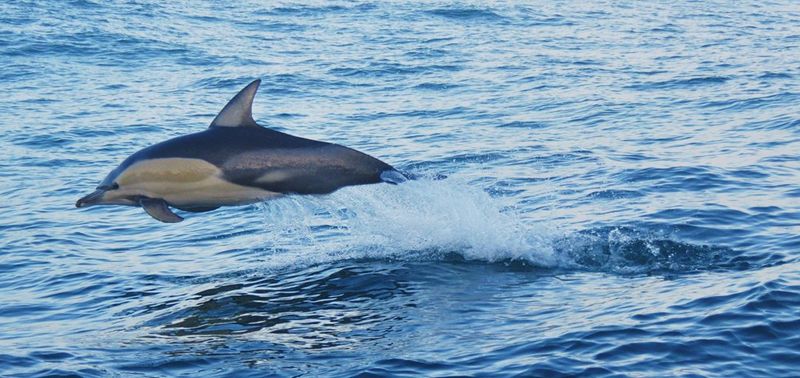Whales & dolphins
Roaming the oceans far and wide, dozens of species of whales and dolphins travel through the Coral Sea Marine Park on their way to distant locations.
For migrating humpback whales, the Coral Sea is also an important meeting location for breeding and calving.
Its tropical waters act as a comforting blanket for baby whales, which are born without enough protective blubber to keep them warm in their Antarctic feeding grounds.
Did you know?
- 5000 kilometres is the average humpback whale migration — among the world’s longest mammal journeys.
- 28+ species of whales and dolphins are known to visit the Coral Sea.
- Sperm whales dive more thank to feed on mysterious deep-water squid at the bottom of the ocean.
When to spot whales and dolphins in the Coral Sea
- June and July – dwarf minke whales. On some expeditions you can even float alongside them, waiting for the curious whales to come and check you out.
- June, July and August – humpback whales travelling north to meet up in their breeding grounds.
- October to December – toothed whales congregating with spawning groups of black marlin.
“Dwarf minkes are highly inquisitive and often approach snorkellers and divers to within close distances, sometimes interacting for extended periods.”
~ Minke Whale Project ~
Literally breathtaking
Although they swim like fish and easily complete 30-minute dives, whales and dolphins are mammals and need to breathe air.
They can’t breathe while asleep, so staying alive means keeping part of their brain awake at all times.
This allows them to concentrate on not drowning while still getting some much-needed rest.
The predators
Dolphins, porpoises and other toothed whales hunt fish, seals, sea lions and even fellow whales and dolphins. They’re quite sociable and often gather in large pods.

Coral Sea visitors include:
- orcas – the biggest dolphins, also known as killer whales for their fierce attacks on seals and other large whales and dolphins
- Indo-Pacific bottlenose dolphins – cunning and resourceful, they carry sea sponges to protect their beaks from sea urchin spikes
- beaked whales – rarely seen, but detected by acoustic recorders near Cato Island and Wreck Reef.
Long-distance travellers
In 2013 the Minke Whale Project tagged and tracked dwarf minke whales.
After a few sociable weeks in the northern Great Barrier Reef and Coral Sea, the whales headed down the coast to Tasmania, the sub-Antarctic, where the last signals came from, and perhaps beyond.
The gulpers
Baleen whales gulp huge mouthfuls of water and filter it back out, trapping krill and small creatures behind a fringe of bristles.
They’re more solitary but sometimes feed or travel in small groups. Coral Sea visitors include:
- humpback whales – the most breathtaking sight in the annual whale migration along Australia’s east coast
- Bryde’s whales – pronounced ‘brooh-duhs’ after their namesake, a famous Norwegian whale hunter. Little is known about this mysterious species, which for many years was confused with others like the sei whale
- dwarf minke whales – the smallest baleen whale. Their winter gathering in the north-west of the Coral Sea is the only predictable opportunity to see large groups of them anywhere in the world.
Discover more
Find out about:
- the Coral Sea Marine Park
- visiting the Coral Sea
- whales, dolphins and porpoises in Australian waters.
Stay in touch
Subscribe to receive important updates about your marine parks. Enter your email address and click "join now".





